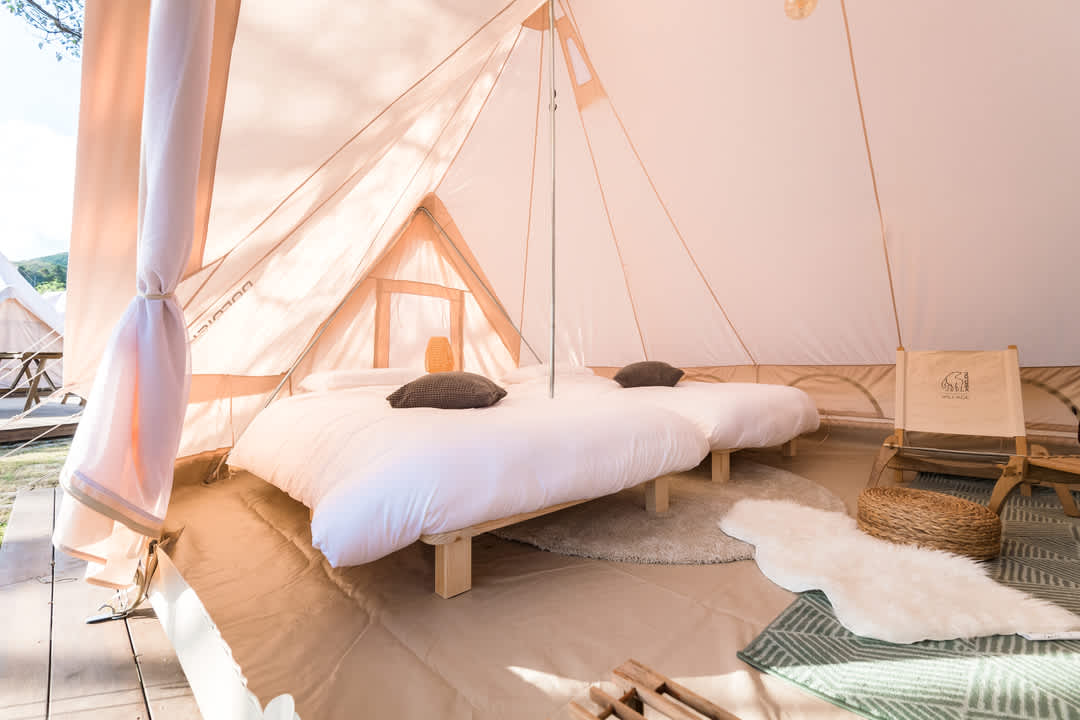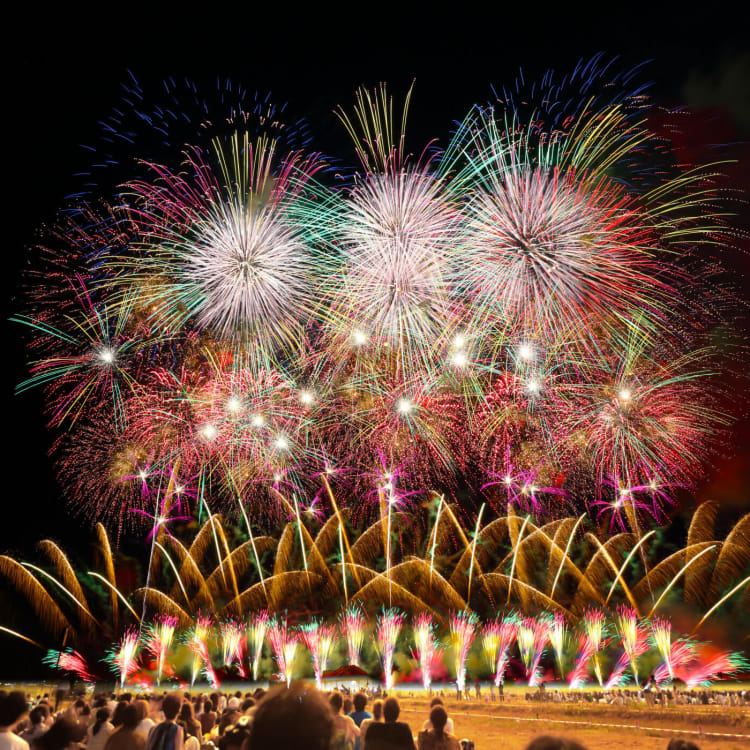
STORY 8 must-dos for a Japanese summer to remember
Experience 8 things that make for a sensational summer in Japan
Summer in Japan, while hot and humid in many parts of the country, is also a time of celebration and festivities. From centuries-old cultural festivals to world-class fireworks displays, there is an abundance of amazing things to experience to ensure you have a Japanese summer to remember. Here are 8 must-dos for your itinerary.

1. Be mesmerised by fireworks displays
Hanabi literally translates as ‘flower fire’ – the perfect description of fireworks that bloom across Japan’s summer skies. Japanese fireworks are a spectacular sight to behold with many looking to the skies each summer at fireworks festivals held across the country.
Fireworks are very much revered in Japan, so much so that there is even a Prime Minister’s Prize awarded each year to the best pyrotechnic creations! Don a yukata (casual cotton kimono) and explore the festival food and activity stalls before the fireworks start for a quintessential Japanese summer experience.
Here are some of Japan’s famous fireworks festivals where you can feast your eyes on sparkling summer skies:
Watch a spectacular sky show in the city of Daisen, Akita Prefecture accompanied by storytelling and music as pyrotechnicians from all across the country battle it out to be crowned the best in Japan. The festival is held on the last Saturday of August every year.
- Nagaoka Fireworks Festival – Sit on the riverbanks of the Shinano River in Niigata Prefecture and be mesmerised by this sparkling festival. Highlights include the 3-foot diameter shell fireworks and a 650-metre long fireworks display reminiscent of ‘Niagara Falls’. Held on 2-3 August every year.
- Sumida River Fireworks Festival – See Tokyo illuminated in fireworks in one of Japan’s most famous fireworks festivals which is said to have originated from the Ryogoku Kawaki-no-Kiraki Fireworks launched in 1733. It is typically held on the last Saturday in July each year. *Cancelled for 2022
Fun fact: In Japan you can purchase handheld fireworks to hold your own mini fireworks show by the river or in parks. Take care as you ignite the fun!

Farm Tomita’s famous Irodori Field in Furano, Hokkaido Prefecture. Image: littlewormy/Shutterstock.com
2. Walk through fields of flowers
Take a walk down the garden path and feast your eyes on blooming fields of flowers at these gram-worthy locations:
Farm Tomita, Hokkaido Prefecture
You’ll feel like you’ve stepped into a fairytale as you stroll through rainbow fields of flowers at Farm Tomita in Furano, Hokkaido. While the farm features blooms from April to October, the best time to see their famous lavender fields is early to mid-July. Best enjoyed with a delicious lavender soft serve ice cream in hand!
Getting there: The farm is around a 25-minute walk from Nakafurano Station to Farm Tomita. From mid-June to late August the seasonal ‘Furano-Biei Norokko-go’ train runs between Asahikawa and Furano and stops at Lavender Farm Station, which is a 7-minute walk to Farm Tomita.
Shimoda Park, Shizuoka Prefecture
Enjoy a stroll in the cool of the morning or evening in this scenic hillside park that overlooks Shimoda Bay. You can drink in the views that stretch out to the Pacific Ocean from three lookout observatories and admire some three million hydrangea bushes (a Japanese symbol of summer!) along the way. In June, Shimoda Park holds its annual Hydrangea Festival featuring festival food stalls and live entertainment.
Getting there: Take a bus from Izukyu-Shimoda Station and get off at Shimoda Aquarium. The park is directly behind the aquarium. Alternatively, the park is a 20-minute walk from Izukyu-Shiomoda Station.
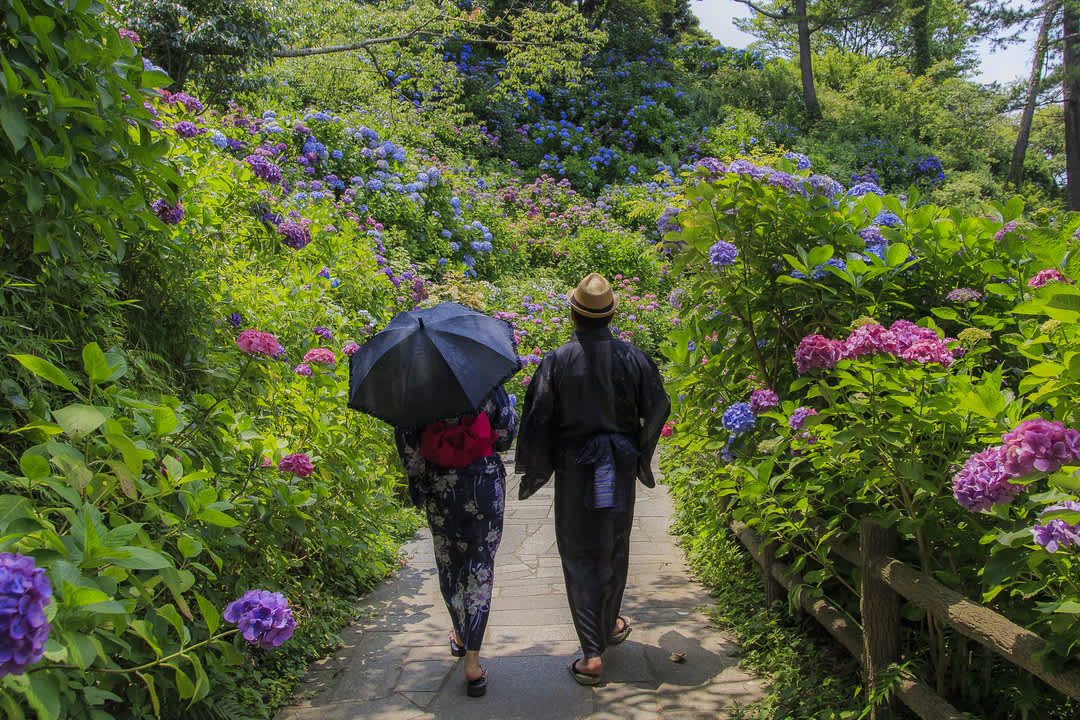
Walking through the hydrangea garden at Shimoda Park, Shizuoka Prefecture. Image © Shizuoka Prefectural Tourism Association
Nokonoshima Island Park, Fukuoka Prefecture
Located on the northern tip of Nokonoshima Island, a short ferry ride from Fukuoka City, Nokonoshima Island Park is famous for its blooming fields of sunflowers and marigolds in summertime.
Getting there: The island is accessible by a 10-minute ferry ride from Meinohama Ferry Terminal. The closest subway station is Meinohama Station. From there, take the Nishitetsu Bus from Meinohama-eki Kitaguchi and alight at Noko Tosenba. Alternatively, you can take a bus that runs from Hakata Station and Tenjin Station Bus Terminal Mae directly to the port.

Views from the beautiful Nokonoshima Island Park in Fukuoka Prefecture covered in colourful blooming flowers before mesmerising sea vistas. Image: Mny-Jhee/Shutterstock.com
3. Experience a Grand Sumo Tournament
Nagoya Grand Sumo Tournament, Aichi Prefecture
Experience Japan’s much loved national sport of sumo wrestling at the annual Nagoya Grand Sumo Tournament, held in the Aichi Prefectural Gymnasium (Dolphins Arena) each July. The tournament spans 15 days featuring some of Japan’s finest sumo wrestlers (rikishi) who fight it out in the sumo circle for the championship prize.
Sumo wrestling is believed to have originated as a festival ritual to predict the year’s harvest. Bouts were typically held at Shinto shrines until the first sumo hall, Ryogoku Kokugikan, opened on the banks of the Sumida River in Tokyo in 1909.
Traditions continue to be woven through the fabric of the sport today.
Tickets start at 3,000 yen (approx. A$32.40) for an arena seat and are available from the official online ticketing site of the Nihon Sumo Kyokai (Ticket Oosumo) .
Location: Aichi Prefectural Gymnasium – Dolphins Arena. Look out for the historic Nagoya Castle next door to the venue!
Getting there: It’s a 5-minute walk from Shiyakusho Station on the subway Meijo Line.
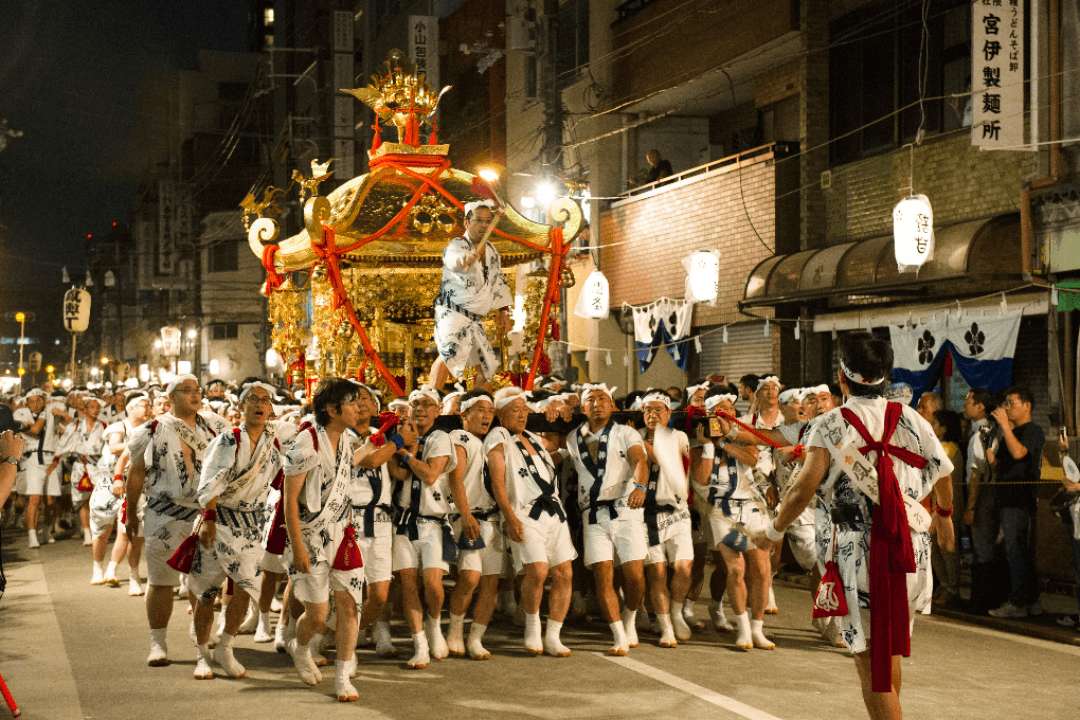
Portable shrine paraded on the streets of Tenjinbashi and Nakanoshima at the Tenjin Festival in Osaka Prefecture. Image © Osaka Convention & Tourism Bureau
4. Have some festival fun at a matsuri
Festivals (matsuri) are well woven into the fabric of summertime life in Japan with countless festivals large and small held each year across the country. Matsuri provide the opportunity to experience a variety of Japanese traditions and meet locals in a fun and exciting atmosphere. Often, they are celebrated around shrines and temples and feature portable shrines or colourful festival floats.
Here are some of the must-see festivals to note for your next Japan itinerary:
- Tenjin Festival, Osaka Prefecture – 24 to 25 July*
Osaka’s premier festival honours the Japanese deity of scholarship and learning and has grown over 1,000+ years to become one of Japan’s most lively. Filled with dance, music and a procession of shrines culminating in a dazzling fireworks display, it’s one not to be missed. *Cancelled for 2022
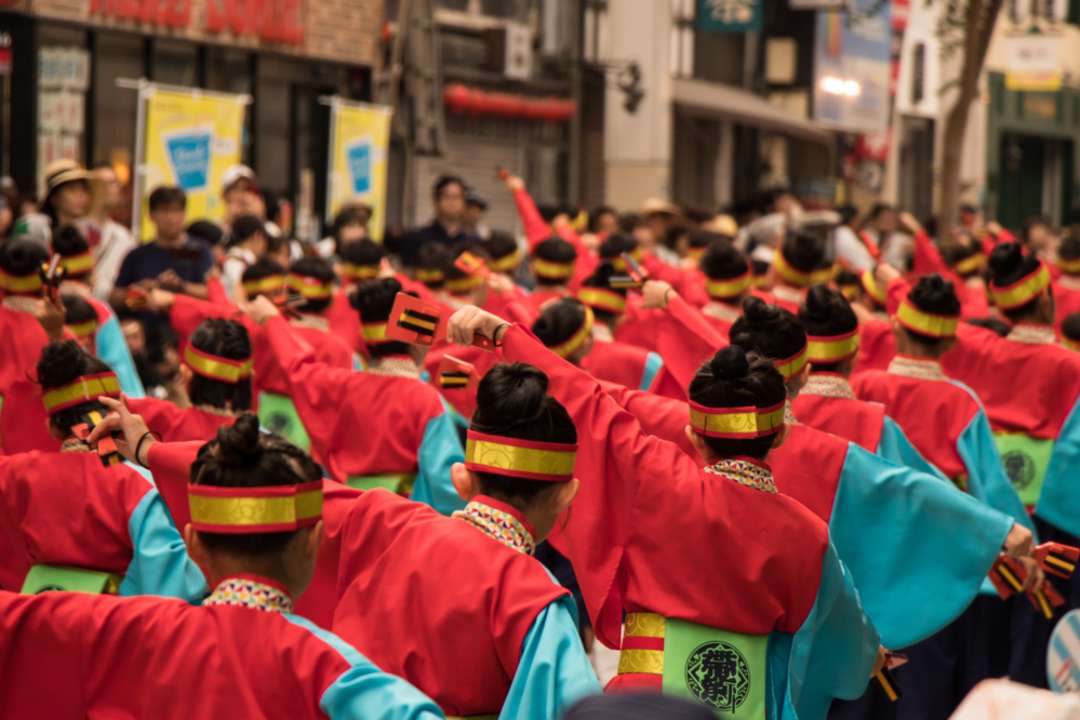
- Yosakoi Festival, Kochi Prefecture – 9 to 12 August
This popular dance festival draws 200 dance teams from across the country and even overseas to bust a move to the yosakoi bushi folk song. The city of Kochi transforms each summer into an open-air stage with vibrant group dance performances at 16 locations across the city. If you’re keen to join in on the fun, some teams accept walk-ins on 10 and 11 August.
Tickets: Day and night tickets are available to purchase but tickets tend to sell out quickly. Most of the other performance venues are standing only, and you can watch yosakoi teams dancing around the city throughout the day for free.
Getting there: From Tokyo, Kochi is about 1.5 hours by plane and from Osaka it’s 3.5 hours by train.

Illumination of brave warriors – one of the lantern floats at the Aomori Nebuta Festival in Aomori Prefecture. Image: Jnichanan/Shutterstock.com
- Nebuta Festival, Aomori Prefecture – 2 to 7 August
The Aomori Nebuta Festival brings the streets of Aomori to life with a procession of hand-crafted lantern floats (called ‘nebuta’) accompanied by taiko drummers and cymbal players and followed by hundreds of local dancers known as ‘haneto’.
Feel free to join in the dancing procession – but you’ll need a traditional haneto dancing costume (around 4,000 yen, currently approx. A$42.60 to rent).
Fun fact: Teams spend an entire year constructing the spectacular 9m x 5m floats which depict all sorts of human characters ranging from mythical and historical figures to contemporary TV personalities.
Getting there: The parade route is on a three-kilometre loop around central Aomori and is a ten-minute walk from Aomori Station.
Learn more about Japan’s festivals.

5. Immerse yourself in water wonderlands
From white sandy beaches and crystal-clear diving spots to family-friendly water parks, there are so many ways to stay cool. Here are a few destinations for your Japan summer travel list!
Izu Peninsula & Ogasawara Islands, Shizuoka and Tokyo Prefectures
Popular with surfers and onsen enthusiasts alike, the Izu Peninsula in Shizuoka Prefecture is home to numerous white sandy beaches (such as those in Shimoda, Atami and Ito). Part of the Fuji-Hakone-Izu National Park, the Peninsula looks out at Mt Fuji and is renowned for its lush waterfalls and rugged cliffside views.
Follow the peninsula down deeper into the Pacific 1,000km south of Tokyo to find a UNESCO Natural World Heritage site – the Ogasawara Islands – a chain of 30 islands where you can experience unspoiled nature as all except Chichijima and Hahajima Islands are uninhabited. These islands are not easy to get to but are worth the trip.
Getting there: Take a 24-hour-long ride on the Ogasawara-Maru Ferry from Takeshiba Terminal in Tokyo to Futami Port on Chichijima Island. From there, you can explore the other islands.
Nagashima Resort, Mie Prefecture
Nagashima Resort has something for everyone with an amusement park, flower garden, water park, onsen and outlet mall in the same convenient location. Located in Kuwana, Mie (just outside Nagoya in Aichi Prefecture) Nagashima Spa Land (the amusement park) features 60 attractions including the highest ascending roller coaster in Japan.
Jumbo Seawater Pool, only open during summer from the beginning of July to end of September offers endless fun for families with waterslides, pools and water attractions, including a wave pool. For onsen-lovers, head to Nagashima Spa Yuami no Shima and choose from 17 natural onsen.
Getting there: Nagashima Resort is a 50-minute expressway bus ride from Nagoya Meitetsu Bus Center.

Zamami Island, Okinawa Prefecture
Zamami Island, Okinawa Prefecture
The second biggest of the Kerama Islands is renowned as an unspoiled paradise, home to a small village of 600 people and abundant marine life such as turtles. Furuzamami Beach is a snorkeller’s and diver’s paradise with clear waters and abundant sea life close to the shore.
Fun fact: The blue shade of the waters surrounding the Kerama Islands is so distinctive they named a colour after it – Kerama Blue.
Getting there: Zamami Island is a 50-minute high speed ferry ride from Tomari Port in Naha.
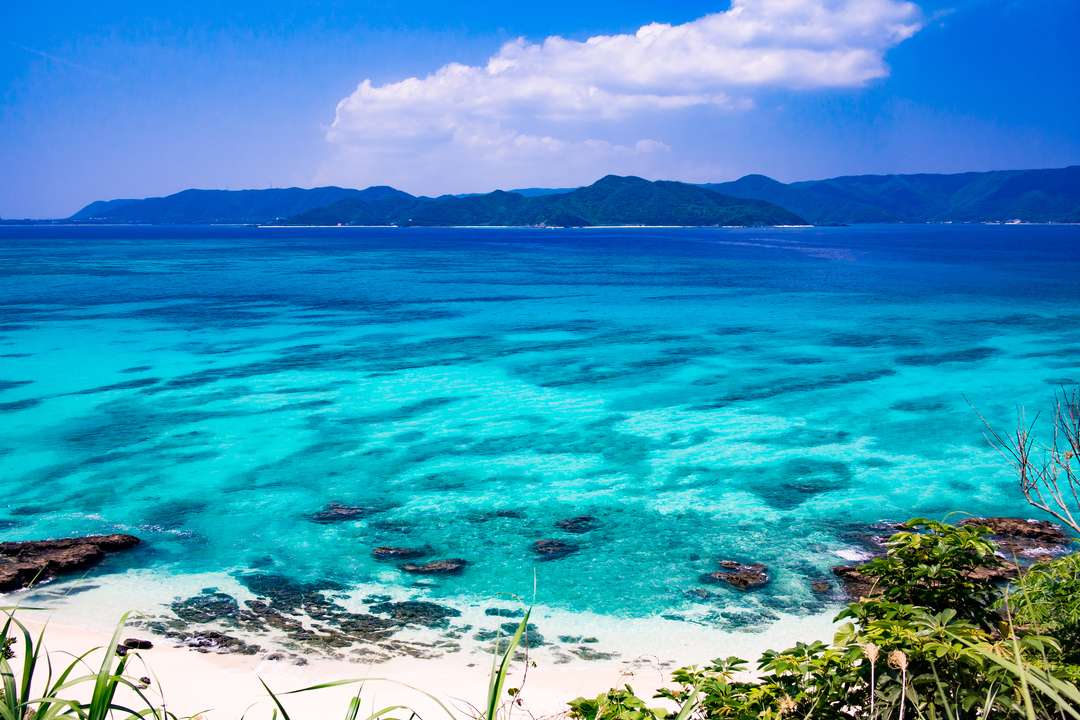
The UNESCO World Heritage listed island of Amami-Oshima in Kagoshima Prefecture.
Amami-Oshima Island, Kagoshima Prefecture
Nestled between Kyushu and Okinawa in the East China Sea, the balmy island of Amami-Oshima is popular with snorkelling and diving enthusiasts. It was registered as a UNESCO World Natural Heritage Site in 2021.
Getting there: There are regular ferries and flights from Kagoshima and flights from other major cities such as Tokyo, Osaka and Fukuoka to the island.

teamLab Planets Floating Flower Garden
6. Open your mind and stay cool at museums
Escape the heat of the day with a visit to one of Japan’s many fascinating museums where you can experience the unique culture of the land of the rising sun.
teamLab Planets, Tokyo Prefecture
Step into the surreal at Teamlab Planets’ massive exhibition spaces and gardens with immersive experiences designed to blur the edges of oneself and art and to explore a new relationship with the world. From diving into the Infinite Crystal Universe to being enfolded in the Floating Flower Garden, it’s guaranteed to blow your mind. Get a taste of what to expect on their official website .
Getting there: teamlab Planets is just a 1-minute walk from Shin-Toyosu Station (on the Yurikamome Line) or a 10-minute walk from Toyosu Station (on the Tokyo Metro Yurakucho Line).

Adachi Museum of Art, Shimane Prefecture
Art and nature combine at the Adachi Museum of Art with stunning Japanese gardens juxtaposed with artworks by some of Japan’s most famous modern Japanese art pioneers. The gardens, called ‘living paintings’, change in appearance dramatically with each of the seasons and can be viewed from inside the museum so you stay nice and cool. Enjoy refreshments at the museum’s tea room while admiring the views.
Getting there: You can catch a free shuttle bus from Yasugi Station.

Visitors marvelling at creatures of the deep at the Osaka Aquarium Kaiyukan in Osaka Prefecture. Image: JaysonPhotography/Shutterstock.com
Osaka Aquarium Kaiyukan, Osaka Prefecture
Get up close and personal with the creatures of the deep at the Osaka Aquarium Kaiyukan where you can step through 15 aquatic tanks recreating spaces from regions of the Pacific Rim. Home to 30,000 creatures from 620 different species, you’ll expect to spend several hours exploring this aquarium.
Getting there: The aquarium is a 5-minute walk from Osakako Station (Osaka Metro Chuo Line).
Nordisk Village, Japan’s first Scandinavian-style glampsite in the Goto Islands, Nagasaki Prefecture. Image © Nordisk Village Goto Islands
7. Go Glamping
Summer can be hot and humid, but glamping is a good option if you want to enjoy the great outdoors in comfort (and style!).
Nordisk Village, Nagasaki Prefecture
You can stay at Japan’s first Scandinavian-style glampsite Nordisk Village in the spectacular Goto Islands of Nagasaki. The tents are spacious, air conditioned and offer the perfect mix of Danish hygge (cosiness and comfort) and Japanese design. Learn more at their official website .
Getting there: Goto Islands are connected via daily flights from Nagasaki Airport or Fukuoka Airport and by boat from Nagasaki or Hakata. Nordisk Village is about 15 minutes from Goto Airport/Fukue Port. Car hire is recommended, but Nordisk Village also offers a pick-up service.
Hoshinoya Fuji, Yamanashi Prefecture
HOSHINOYA Fuji is a gorgeous glamping resort nestled in the forests of the Mt Fuji area with beautiful views of Lake Kawaguchi. A popular sensory wonderland enveloped in nature, be sure to book ahead to secure your air-conditioned cabin via their official website .
Getting there: Hoshinoya Fuji is a 20-minute drive/taxi ride from Kawaguchiko Station which is a 2-hour train ride from Tokyo.
Tent Ichinomiya, Chiba Prefecture
Tent Ichinomiya Glamping Resort is located just minutes from the beach in Chiba Prefecture and invites guests to ‘play with the earth’. Also a popular surfing destination, Tent Ichinomiya is equipped with all your glamping facilities, including air conditioned cabins and a rooftop jacuzzi. Find out more on their official website .
Getting there: The nearest train station is Kazusa Ichinomiya, about 60 minutes from Tokyo Station via the Wakashio Limited Express Train on the Keiyo Line. From there, it’s a 6-minute bus, taxi or courtesy bus ride to Tent Ichinomiya.

‘Kawadoko’ riverside dining in Kibune, Kyoto Prefecture. Image: Amstk/Shutterstock.com
8. Taste a Japanese summer
What better way to taste a Japanese summer but through its delicious food? Here are some must-taste Japanese food experiences:
Kawadoko
Kawadoko is a style of restaurant where the floor is placed over or next to a river – a popular cooling location for a meal. You can experience this at restaurants along the Kamogawa River or in Kibune in Kyoto Prefecture.
Nagashi somen
Nagashi somen is a delicious Japanese summer staple of tasty thin noodles that are caught with chopsticks flowing with ice-cold water down a bamboo chute – a fun, tasty and refreshing activity on a summer's day.
Summer festival foods
- Kakigori – a hit at matsuri festivals, kakigori is a traditional Japanese shaved ice dessert flavoured with various types of fruit syrups like cherry, lemon, strawberry or grape. Its texture is very soft, light and fluffy, melting in your mouth like freshly fallen snow.
- Okonomiyaki – Japan’s savoury pancake – is made with flour, egg, cabbage and a bit of dashi broth, then topped with ingredients such as meat or seafood and condiments such as okonomiyaki sauce, Japanese mayonnaise, dried seaweed and bonito flakes.
- Yakisoba – stir-fried noodles cooked on a hotplate with vegetables (usually cabbage and carrots), protein (meat or seafood), pickled ginger and a slightly sweet sauce.



















































